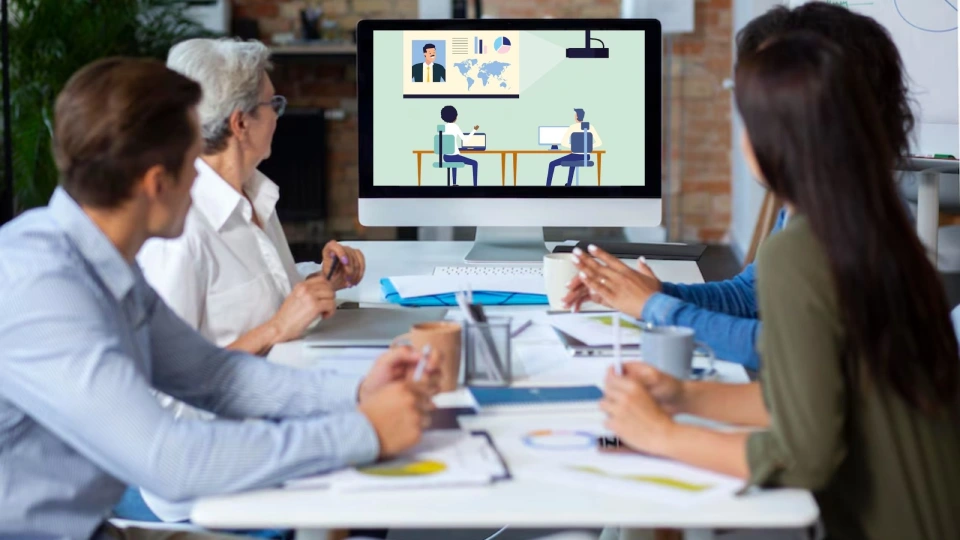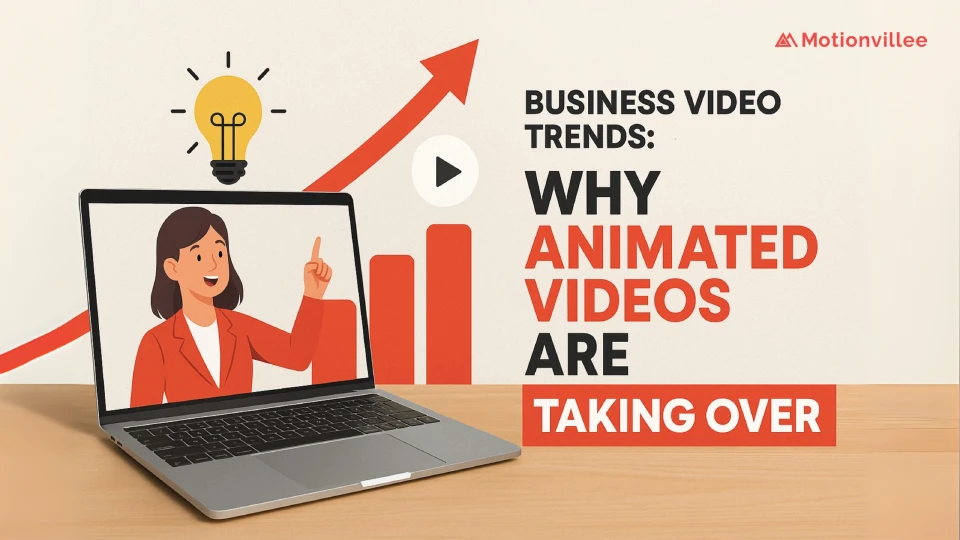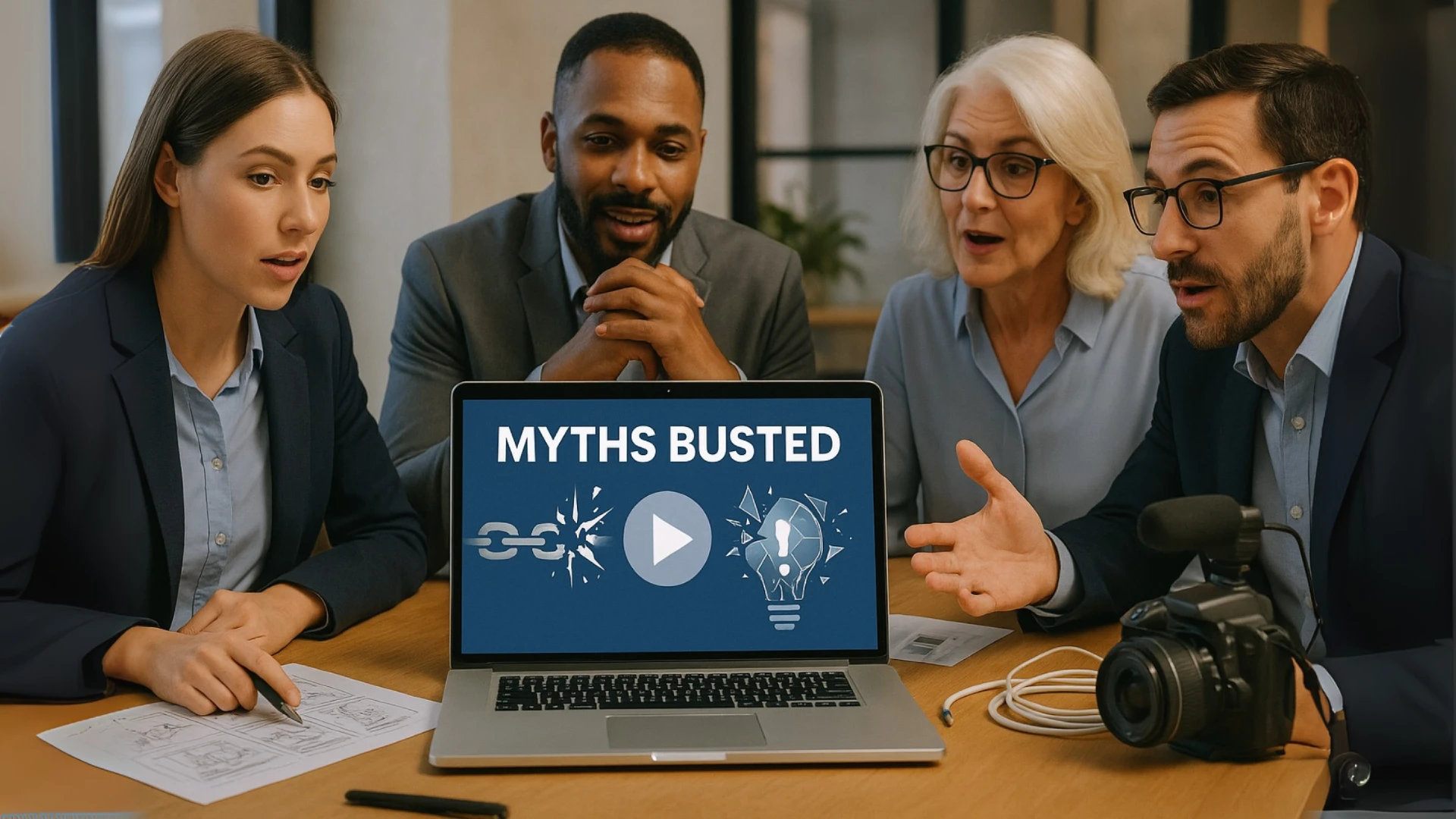Corporate training has long been a cornerstone of employee development, but traditional methods are quickly becoming outdated. From lengthy in-person workshops to static slide decks, many companies struggle to keep their teams engaged and ensure knowledge retention. As the workplace evolves, the need for more effective solutions, such as video based learning in corporate training, is becoming increasingly clear.
One solution that is gaining significant traction is video-based learning. With its ability to deliver information in a dynamic, engaging, and easily digestible format, video-based learning provides a modern alternative to outdated training methods.
Why is this shift happening?
- Low engagement: Traditional methods often fail to capture attention.
- Poor retention: Employees quickly forget what they’ve learned in static formats.
- Time constraints: Busy schedules make lengthy in-person sessions hard to sustain.
Video based learning addresses these challenges by offering flexibility, engagement, and better knowledge retention. Let’s explore why it works so effectively in corporate environments.
Why Traditional Training Methods Fall Short
Traditional corporate training, like slide decks, printed manuals, and long in-person sessions, no longer delivers the results companies need. These outdated approaches often fall behind in today’s fast-paced work environments where attention is short and expectations are high.
Here’s why traditional training methods don’t work well anymore:
- They fail to engage: Static formats like PowerPoint slides and one-way lectures don’t hold attention. Employees are used to interactive and media-rich content in their daily lives. When training feels dull, focus drops fast.
- They hurt retention: Most employees forget nearly 70% of the information taught in traditional sessions within a week. Without reinforcement or stimulation, learning fades quickly.
- They’re inconvenient: Scheduled training sessions interrupt work and are hard to attend across locations or time zones. Employees need flexibility, and traditional methods don’t offer that.
- They’re inconsistent: Instructor-led training often varies from one session to the next. The tone, clarity, and coverage can shift depending on who’s presenting.
- They take too much time: Coordinating live sessions for large teams slows down training rollouts. It also adds to costs and delays onboarding or upskilling.
These limitations create friction in employee learning and hurt overall performance. That’s why more companies are turning to training and development video production. With videos, you can deliver clear, engaging, and repeatable content that actually sticks.
The Power of Video: Why It Works for Training
In today’s corporate world, grabbing and holding employee attention is a challenge. That’s where video based learning in corporate training stands out. Video content doesn’t just deliver information, it delivers it in a way that’s visual, consistent, and highly effective.
Here’s why video works so well for corporate training:
1. It Boosts Retention
People remember more when they see and hear information together. A recent study by Forrester found that employees are 75% more likely to watch a video than read text. When content is visual and engaging, it sticks longer and is easier to recall.
2. It’s Consistent Across Teams
One of the biggest training challenges is ensuring consistency. With traditional methods, delivery can change depending on who’s leading the session. A training video removes this problem. Everyone receives the same message, with the same tone, clarity, and accuracy, no matter when or where they watch it.
3. It Drives Engagement
Animated visuals, voiceovers, and on-screen text keep employees focused. Unlike a 60-slide PowerPoint, video breaks down complex topics into digestible chunks. Learners stay engaged, especially when content is interactive or includes real-world examples.
4. It Saves Time and Resources
A well-made video can train hundreds or thousands of employees without extra effort. No need to schedule sessions, book trainers, or print materials. This makes company training video production not only effective, but also cost-efficient.
5. It Fits the Way People Learn Today
People already learn through videos every day, on YouTube, LinkedIn Learning, or internal portals. Using video in corporate training aligns with this natural behavior, making learning feel familiar and accessible.
Video-based learning turns passive content into an active experience. That’s why top-performing organizations are making it a core part of their training strategy.
Real Life Examples of Video-Based Training Success
The growing use of video-based learning in corporate training isn’t just a trend, it’s a proven approach that companies are actively adopting to improve results. Leading brands in the US and UK are using video not just for onboarding but for continuous learning, compliance training, and product education. At Motionvillee, we’ve worked with a range of B2B companies to develop corporate training videos that solve real communication and training challenges.
These videos go beyond simple instruction. They blend storytelling, visuals, and clear structure to help employees retain key messages and understand complex ideas faster. Here’s an example of how Motionvillee helped a client bring clarity to their internal training process:
How to Implement Video-Based Learning in Your Organization
Integrating video based learning in corporate training isn’t just about adopting new tools, it’s about creating a smarter, more consistent, and scalable training experience. For CEOs and L&D leaders, the transition can be both strategic and practical if approached step by step.
Here’s how to make it work in your organization:
1. Define Training Objectives
Start by identifying what you want employees to learn. Is it compliance, onboarding, product knowledge, or soft skills? Clear goals will shape both the format and style of your videos.
2. Choose the Right Video Format
Different content types serve different purposes:
- Explainer videos for complex concepts.
- Microlearning clips for on-the-go refreshers.
- Scenario-based videos for roleplay and decision-making training.
A good training and development video production partner like Motionvillee can guide you on choosing formats that match your goals and audience needs.
3. Work with a Strategic Production Team
Effective videos require more than good visuals, they need clear messaging and instructional flow. A corporate video production team specializing in training content will help craft videos that balance creativity with purpose.
4. Host and Deliver on the Right Platform
Use an internal LMS (Learning Management System) or platforms like Vimeo Enterprise or TalentLMS to host videos. Ensure the platform tracks completion and engagement metrics.
5. Measure and Optimize
After rollout, review viewer analytics:
- Completion rates
- Rewatch frequency
- Quiz or assessment scores (if applicable)
Use these insights to refine future content and keep your training relevant and results-driven.
By taking this structured approach, you can embed video learning into your company’s culture, making knowledge transfer smoother and more engaging for your team.
Conclusion
Video based learning in corporate training is no longer a nice-to-have, it’s essential for organizations that want real results from their training programs. It offers a clear advantage over outdated methods by delivering content that is consistent, engaging, and easy to retain.
Whether you’re onboarding new employees, rolling out compliance training, or upskilling your teams, video helps you do it faster and more effectively. It adapts to today’s work culture, flexible, remote, and driven by results.
Motionvillee helps companies bring their training vision to life with tailored video content that’s designed to educate, inspire, and drive action. We take the guesswork out of the process and deliver content that aligns with your business goals.
Ready to take the next step? Schedule a call with our team to explore how video can transform your corporate training.









